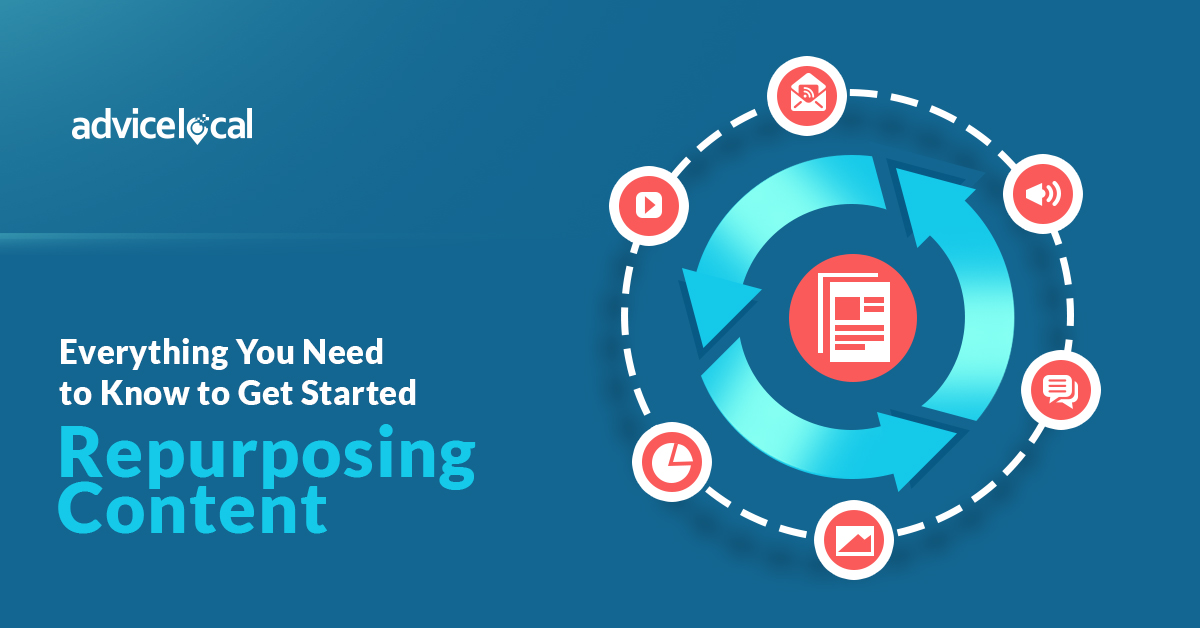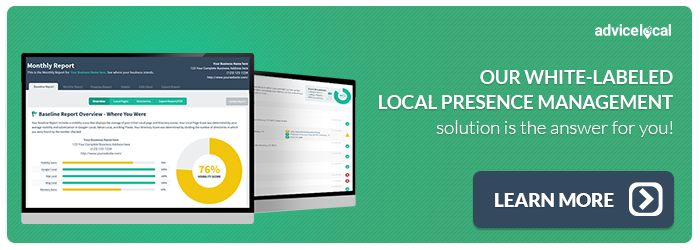I’ve written about creating content a lot lately and you may be wondering why. The answer is simple – search engines index content, and indexed content is how businesses can place higher in search results. By creating content, you’re also creating an option beyond directory listings and reviews to place in search.
Once you create great content, you can repurpose it into many different useful resources to educate current partners, engage prospective customers and generate further site traffic through social media, email marketing and more.
Before I move on to methods for repurposing content, let’s define what “repurposing” means:
According to the Merriam-Webster dictionary, repurposing means to change (something) so that it can be used for a different purpose.
A positive side effect of repurposing content is saving energy, money and efforts on the resources it takes to constantly create new content. But there is another even bigger reason you should repurpose content into many different forms…
Repurposing Content is Ideal to Attract Different Learners
Everyone learns and processes information differently, so presenting content in multiple formats to attract reading/writing, kinesthetic, visual and auditory learners will expose the business to a wider audience.
Here are some examples of the different types of learners and the types of content that attracts them.
Reading/Writing Learners
Just like it sounds, they do the best when reading and writing – blogs, quizzes, guides and eBooks work really well here. It’s even better if you can integrate questions into the content and have readers write their answers down.
Kinesthetic Learners
They learn best by seeing and doing – give them the steps it takes to implement what they are learning. Providing these steps in a blog post or how-to video is ideal.
Visual Learners
They connect the dots by following the path – charts, infographics and slide decks that are well-organized and demonstrate the point work best here.
Auditory Learners
They need to hear it, not just read or see it – podcasts and webinars are great for them. Anything that includes audio will help them understand the process, product or service.
Creating Content that Can Be Repurposed
When creating a piece of content that is going to be repurposed, it’s important that you do not rely on formatting to get the message across.
- Researching the target audience, finding out where they spend their time online, and what mediums they use to access information will be really important.
- The content should have the ability to be used in any medium and on any platform. One way to achieve this is to store a basic text and audio copy of the information somewhere that can easily accessed for simplistic molding.
- You want content that can be used as a blog post, then segments can be used as a tweet or quote on an image.
If possible, make sure the writer of the content is aware of the different methods you intend to use for repurposing. This will enable them to write in a style that will not require as much adjusting to fit the various mediums of intended use.
I practice what I preach, so here is a solid example of just one piece of content that we have repurposed at Advice Local.
- The content started as an 80-page slide deck I created for presentation at a conference. Here’s the link.
- From there, it was divided into two articles – “I Like Small Screens and I Can Not Lie” and “The Mobile Guide: 18 Stellar Tips to Take Local and Mobile by Storm.”
- The second article article was repurposed even further and turned into a downloadable guide, which is available with an email opt-in on my #QueenofLocalSEO branded website. (This is the perfect example of how to build up an email list with a piece of repurposed content.)
- We also have an infographic waiting in the wings to promote the 18 mobile tips. (By the way… we will promote the full infographic as one piece of content, and then four divided sections individually, too.)
Another step my team could take to repurpose the content further is to turn each individual tip into a social media text update, in addition to a branded image that could be shared across all social media platforms. That would be an additional 36 pieces of content to share online. To really maximize repurposing, we could include one tip each week in our weekly email newsletter for the next 18 weeks.
Have you done the math yet on how many pieces of content can be created from one? We’ve already created nine pieces of content, with the potential to divide those up into bite-size tips and create 72 more.
How many pieces of existing content do your clients have that you can start repurposing today? But wait, that’s not all…
The Many Ways to Share Repurposed Content
Once you’ve figured out how to repurpose the content across various mediums, the possibilities of where and how to share it are endless.
Here are the easiest places to share almost immediately:
- Email List – Prospects and current customers have opted in. They should get to lay their sights first on something informative.
- Social Media – Yes, Facebook, Twitter, LinkedIn, Pinterest and Instagram are the places to hit up next.
- Slideshare and YouTube – Tips make a great slide deck. Then, you can turn that PowerPoint into a video.
How many places to share the repurposed content can you come up with?
Remember, there’s no harm in sharing a content piece more than once. I guess repurposing the repurposed is a thing, too!
Are you ready to start repurposing? It’s paid off for Advice Local and can pay off for your customers.
While you focus on the repurposing, let our team of local search professionals help with the ranking! Request a demo today.




